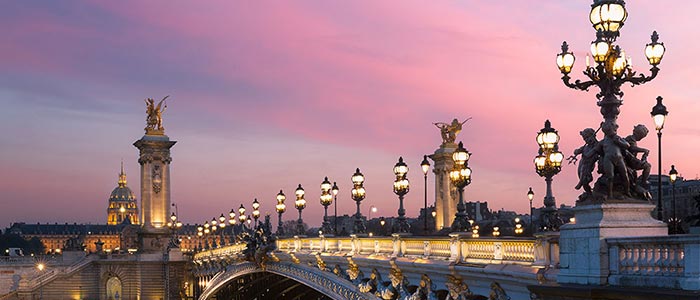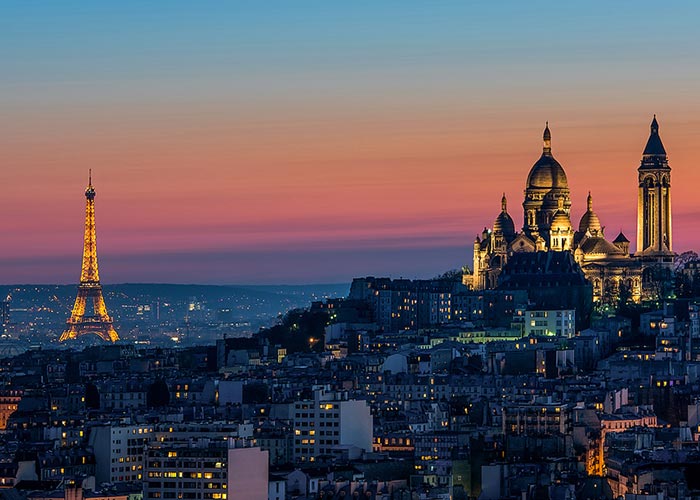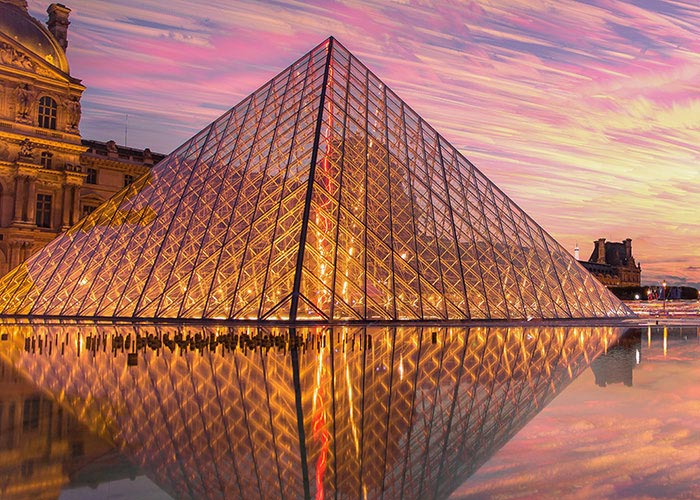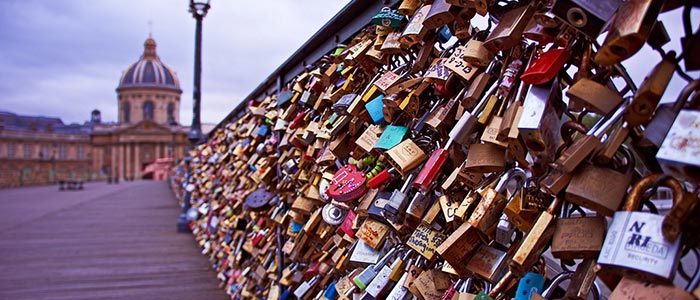About paris
Paris can be seen as the most interesting city of Europe and probably even as one of the most amazing city’s worldwide. People from all over the world travel to Paris to discover and experience this fairy-like city. Paris is the city of love, inspiration, gastronomy, art, and fashion. The night scene, the Eiffel tower and the warm atmosphere will make you feel directly at home.
Paris has a lot of interesting architecture and museums to offer, and is also a Walhalla for shopaholics. A city as Paris is one that everyone should visit and experience. The center of Paris is divided in 20 districts/arrondissements with the majority of the world known attractions (Eiffel Tower, Champs-Elysées, Louvre, Panthéon, Notre-Dame,...) situated in the first 8 arrondissements.
Being the most striking manifestation of the art of metal structures by which our engineers have shown in Europe, the Eiffel Tower is one of the most striking of our modern national genius.
—Gustave Eiffel
Popular Districts
3e & 11e arrondissements: Le Marais and Bastille
5e arrondissement: Quartier Latin
4e arrondissement: Ile de la Cité and Ile St. Louis
6e arrondissement: St.-Germain-des-Prés
7e arrondissement: Invalides
9e arrondissement: Opéra and Beaubourg
17e arrondissement: Champs-Elysées and Tuilerie
18e arrondissement: Montmartre
- See the map

Things to do
La Tour Eiffel
The Eiffel Tower is a wrought iron lattice tower on the Champ de Mars in Paris, France. It is named after the engineer Gustave Eiffel, whose company designed and built the tower.
The Eiffel Tower was built by Gustave Eiffel for the 1889 Exposition Universelle, which was to celebrate the 100th year anniversary of the French Revolution. "Utopia achieved", a symbol of technological prowess, at the end of the 19th Century it was a demonstration of French engineering personified by Gustave Eiffel, and a defining moment of the industrial era.
The tower is 324 metres (1,063 ft) tall, about the same height as an 81-storey building, and the tallest structure in Paris.
The tower has three levels for visitors, with restaurants on the first and second levels. The top level's upper platform is 276 m (906 ft) above the ground – the highest observation deck accessible to the public in the European Union. Tickets can be purchased to ascend by stairs or lift (elevator) to the first and second levels. The climb from ground level to the first level is over 300 steps, as is the climb from the first level to the second.
As France’s symbol in the world, and the showcase of Paris, today it welcomes almost 7 million visitors a year, making it the most visited monument that you have to pay for in the world.
Hours: Everyday 9AM to 12AM
Price: 17€
Buy tickets Website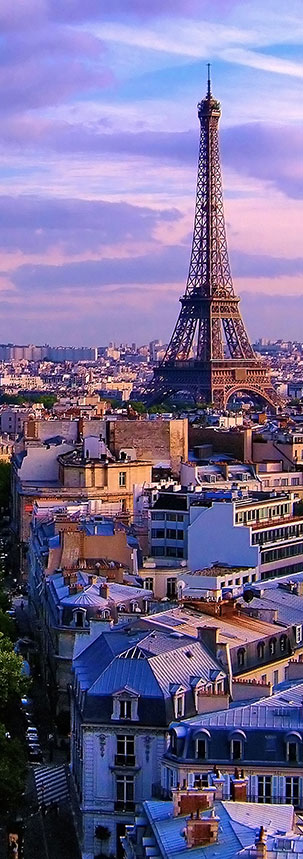
L'Arc de Triomphe
A unique viewpoint. From the top of the panoramic terrace, your eyes sweep over the whole of Paris.
The revisited Antiquity. Architect Jean-François Chalgrin was inspired by the Roman Arch of Titus in a single arch, but went beyond it by exceptional dimensions and abandoning columns.
A key place of major national events. Wanted by Napoleon in 1806, the Arc de Triomphe was inaugurated in 1836 by French king, Louis-Philippe, who dedicated it to the armies of the Revolution and the Empire. The Unknown Soldier was buried at the base of the arch in 1921. The flame of remembrance is rekindled every day at 18:30.
The Arc de Triomphe is one of the most famous monuments in Paris, standing at the western end of the Champs-Élysées at the center of Place Charles de Gaulle, formerly named Place de l'Étoile — the étoile or "star" of the juncture formed by its twelve radiating avenues.
As the central cohesive element of the historic axis, a sequence of monuments and grand thoroughfares on a route which runs from the courtyard of the Louvre to the Grande Arche de la Défense, the Arc de Triomphe was designed by Jean Chalgrin in 1806 and its iconographic program pits heroically nude French youths against bearded Germanic warriors in chain mail.
Hours: Everyday 10AM to 10:30PM
Price: 12€
Buy tickets Website
Notre-Dame de Paris
Notre Dame de Paris is a medieval Catholic cathedral on the Île de la Cité in the fourth arrondissement of Paris, France. The cathedral is widely considered to be one of the finest examples of French Gothic architecture, and is among the largest and most well-known church buildings in the world. The naturalism of its sculptures and stained glass are in contrast with earlier Romanesque architecture.
As the cathedral of the Archdiocese of Paris, Notre-Dame contains the cathedra of the Archbishop of Paris, currently Cardinal André Vingt-Trois. The cathedral treasury contains a reliquary which houses some of Catholicism's most important relics, including the purported Crown of Thorns, a fragment of the True Cross, and one of the Holy Nails.
In the 1790s, Notre-Dame suffered desecration in the radical phase of the French Revolution when much of its religious imagery was damaged or destroyed. An extensive restoration supervised by Eugène Viollet-le-Duc began in 1845. A project of further restoration and maintenance began in 1991.
The Notre-Dame de Paris was among the first buildings in the world to use the flying buttress. The building was not originally designed to include the flying buttresses around the choir and nave but after the construction began, the thinner walls grew ever higher and stress fractures began to occur as the walls pushed outward.
Hours: Everyday 7:45AM to 6:45PM
Price: Free
Info visits Website
Le Sacré Coeur
La Basilique du Sacré Coeur is a Roman Catholic church and minor basilica, dedicated to the Sacred Heart of Jesus, in Paris, France. A popular landmark, the basilica is located at the summit of the butte Montmartre, the highest point in the city. Sacré-Cœur is a double monument, political and cultural, both a national penance for the defeat of France in the 1871 Franco-Prussian War and the socialist Paris Commune of 1871 crowning its most rebellious neighborhood, and an embodiment of conservative moral order, publicly dedicated to the Sacred Heart of Jesus, which was an increasingly popular vision of a loving and sympathetic Christ.
The Sacré-Cœur Basilica was designed by Paul Abadie. Construction began in 1875 and was finished in 1914.
Today the Basilica is asserted to be dedicated in honor of the 58,000 who lost their lives during the war, the decree of the Assemblée nationale, 24 July 1873, responding to a request by the archbishop of Paris by voting its construction, specifies that it is to "expiate the crimes of the Commune". Montmartre had been the site of the Commune's first insurrection, and the Communards had executed Georges Darboy, Archbishop of Paris, who became a martyr for the resurgent Catholic Church. The Sacré-Cœur Basilica was designed by Paul Abadie. in 1875 and was finished in 1914. It was consecrated after the end of World War I in 1919.
Hours: Everyday 6AM to 10:30PM
Price: Free
Free audio Guide Website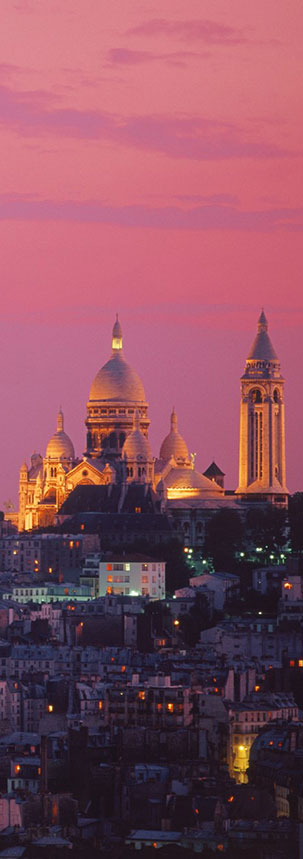
Le Musée du Louvre
Le Louvre is the world's largest museum and a historic monument in Paris, France. A central landmark of the city, it is located on the Right Bank of the Seine in the city's 1st arrondissement (district or ward). Nearly 35,000 objects from prehistory to the 21st century are exhibited over an area of 72,735 square metres (782,910 square feet). The Louvre is the world's second most visited museum after the Palace Museum in China, receiving more than 9.26 million visitors in 2014.
The museum is housed in the Louvre Palace, originally built as a fortress in the late 12th century under Philip II. Due to the urban expansion of the city, the fortress eventually lost its defensive function and, in 1546, was converted by Francis I into the main residence of the French Kings. The building was extended many times to form the present Louvre Palace. In 1682, Louis XIV chose the Palace of Versailles for his household, leaving the Louvre primarily as a place to display the royal collection, including, from 1692, a collection of ancient Greek and Roman sculpture. In 1692, the building was occupied by the Académie des Inscriptions et Belles Lettres and the Académie Royale de Peinture et de Sculpture, which in 1699 held the first of a series of salons.
Hours: Mon, Thurs, Sat, Sun: from 9 a.m. to 6 p.m.
Wed, Fri: from 9 a.m. to 9:45 p.m.
Closed on Tuesdays
Price: 15€
Buy tickets Website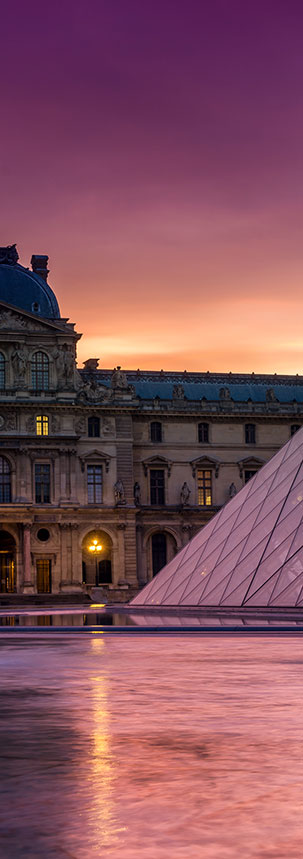
High-end restaurants
- LE MEURICE
Hotel Le Meurice, 228 Rue de Rivoli, 75001
+ 33 (0)1 4458 1055
Cuisine: Classic European
€€€€
- L’ARPÈGE
84 Rue de Varenne, 75007
+33 (0)1 4705 0906
Cuisine: Traditional French
€€€€
- ALAIN DUCASSE AU PLAZA ATHÉNÉE
Hotel Plaza Athénée,
25 Avenue Montaigne, 75008+33 1 44 58 10 10
Cuisine: Modern French
€€€€
- EPICURE
112 Rue du Faubourg Saint-Honoré, 75008
+33 (0)1 5343 4340
Cuisine: Classic French
€€€€
- PIERRE GAGNAIRE
6 Rue Balzac, 75008
+33 (0)1 5836 1250
Cuisine: Classic French
€€€€
Hotels
- Four Seasons Hôtel George V
31 Avenue George V, 75008
+33 1 49 52 70 00
5-star hotel
€€€€
- Paris Marriott Champs Elysees Hôtel
70 Av. des Champs-Élysées, 75008
+33 1 53 93 55 00
5-star hotel
€€€€
- Hôtel Pullman Paris Tour Eiffel
18 avenue de Suffren, 75015
+33 1 44 38 56 00
4-star hotel
€€€
- Hôtel Panache Paris
1 Rue Geoffroy-Marie, 75009
+33 1 47 70 85 87
3-star hotel
€€€
- Hôtel des Grands Hommes
17 Place du Panthéon, 75005
+33 1 46 34 19 60
3-star hotel
€€€
Good to know
Arriving
Charles de Gaulle International Airport (CDG):
about 14 miles northeast of the city, is well served by the RER train network. From easily accessible stations beneath the terminals, take the RER B train to central Paris — about a 45min. ride to stations like Châtelet-Les Halles (about €10), where you can transfer to the Paris Métro lines. Buses run by Air France (from €15) and Roissybus (from €8.60) are less convenient, servicing few stops and usually taking longer than the train. A taxi to the city center costs upward of €86.
Orly Airport:
is only about 12 miles from central Paris. It does not lie directly on a main train line, but buses connect fliers to the Pont de Rungis station on the RER line C (about 10 min. and €2.50). The Orlyval shuttle train also takes you to the RER line B station Antony (8 min. and €7.40). From either station, trains to Paris take about 25 min. and cost €3.60 (RER C) or €6.10 (RER B). The Orlybus shuttle direct to Denfert-Rochereau station in Paris, takes 20 to 30 min. and costs €6.30, while Air France buses serve a number of other stops in the city (from €11.50). Taxis from Orly to Paris cost about €35, more in heavy traffic.
Tipping
By law, your meal check includes VAT (value added tax) and a percentage charge for service. There's no obligation to tip beyond that, but you can show your satisfaction with a gratuity in the 5% to 10% range.
The snobby french?
Whoever started the rumors about Parisian hauteur got it grossly wrong. It's only a matter of approach. A crisp, correct salutation — "Bonjour" ("Good day") or "Bonsoir" ("Good evening") — followed by "Madame" or "Monsieur" almost always elicits attentive service or the assistance you seek.
Getting around
Look for the art nouveau signs above ground that mark Paris Métro entry points. The Métro is convenient and quick, but with some of the stations being quite close together, you might risk missing how delightfully walkable the city is.
Paris offers unlimited travel on the Paris transit system, with a suite of ticketing options. The travel pass is called the ParisVisite. There are one- to five-day passes covering the entire Île-de-France transportation network, including the Métro, RATP buses, and RER trains — even the Montmartre funicular.
Métro and bus service ceases at about midnight. Taxis can be hailed on the street (lighted signs mean cabs are available for hire), or you can call for one by phone or get in line at one of the city's hundreds of taxi stands. Have cash handy (credit cards are rarely accepted) and tip the driver 10%. Tariffs are higher after 7 p.m. and on Sunday.
The Paris Museum Pass, which costs $46 for two days, gets you into more than 60 Paris attractions. It also lets you cut a few queues. If you visit at least a couple of sights each day, your pass will pay for itself.
Café Culture
Lingering over coffee or a glass of wine is a perfectly Parisian thing to do — waiters will respect you for it, rather than rush to turn over your table. Expect coffee to come espresso unless you order otherwise (and pay a premium). If you have to hurry, don't ask for coffee "to go" — it's not usually done — so just down your caffeine hit quickly at the bar.
Gallery
